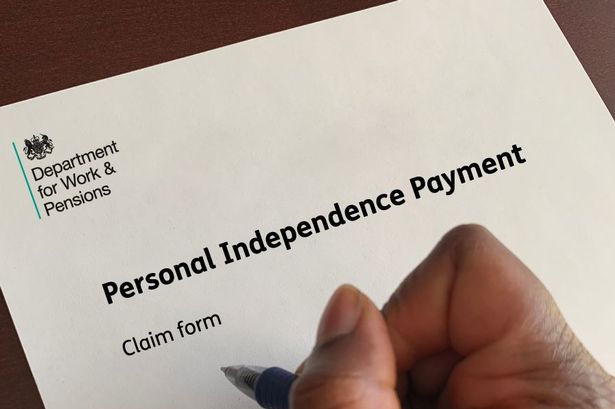
The Department for Work and Pensions says it is seeing “unprecedented” demand for PIP – which pays up to £749 a month
13:07, 22 Oct 2025Updated 13:27, 22 Oct 2025
PIP claims have almost doubled as debate rages over the future of the benefit and further reforms are due to be announced in Autumn 2026(Image: DWP)
Personal Independence Payment (PIP) has become one of the most important benefits in the UK welfare system, supporting people with long-term health conditions or disabilities. However, the scale of claims has shifted dramatically in recent years.
Official DWP data, divided into pre-2019 and post-2019 sections, provides an opportunity for comparison. It shows the number of claims in December 2018 and then the number of claims recorded in the most recent month since 2019 for which verified statistics are available: July 2025.
Between December 2018 and July 2025, the number of people receiving PIP rose from just over 2 million to almost 3.83 million – an increase of almost 90 per cent in just under seven years. This rise has fuelled debates about whether too many people are claiming PIP, whether the criteria are too broad, and what it tells us about the nation’s health.
READ MORE:
The Department for Work and Pensions has admitted in its most recent PIP statistics that “customer demand” has seen “unprecedented levels of new claims in recent quarters.” In the quarter ending July 2025, there were 210,000 applications for PIP, an average of 70,000 new people submitting a claim every month.
PIP numbers at a glanceDecember 2018: 2,028,278 claimsJuly 2025: 3,829,571 claimsOverall growth: +88% in under seven yearsDecember 2018 PIP claims
Total claims: 2,028,278
Top conditions by health category:
Psychiatric disorders: 714,498Musculoskeletal disease (general): 419,374Musculoskeletal disease (regional): 258,743Neurological disease: 280,459Respiratory disease: 94,345Malignant disease: 66,507July 2025 PIP claims
Total claims: 3,829,571 (up 88%)
Top conditions by health category:
Psychiatric disorders: 1,482,217 (up 107%)Musculoskeletal disease (general): 721,575 (up 72%)Musculoskeletal disease (regional): 458,583 (up 77%)Neurological disease: 484,872 (up 73%)Respiratory disease: 140,065 (up 48%)Malignant disease: 124,284 (up 87%)
Psychiatric disorder is a broad term used by the DWP to encompass mental illness, personality disorders, learning disabilities, neurodivergence, and dementia.
The neurological category includes conditions such as epilepsy, cerebral palsy, spina bifida, and muscular dystrophy.
Musculoskeletal disease (general) includes arthritis, fibromyalgia, fracture complications and benign bone tumours, while musculoskeletal disease (regional) includes backache, amputations and localised issues of the shoulder, neck, wrist, hip or foot. Malignant disease refers to cancer.
Why have PIP claims increased so sharply?
Several key factors explain the near-doubling of PIP claims since 2018:
1. Shift from Disability Living Allowance (DLA)
PIP replaced Disability Living Allowance for working-age claimants. As more people migrated from DLA, the number of active PIP claims naturally increased.
In addition, it’s worth noting that DLA has three different rates for its daily care component, whereas PIP has just two. This has led to more people moving from middle-rate DLA to enhanced-rate PIP, pushing up costs.
2. Mental Health Awareness
There is greater recognition of conditions like anxiety, depression, autism, and ADHD. More people are seeking help and applying for PIP, particularly younger claimants.
3. Impact of COVID-19
The pandemic left many with long-term health complications, while also worsening mental health problems across the population.
4. Ageing Population
As the workforce ages, conditions like arthritis, back pain, and neurological disease are becoming more common.
5. Policy and Assessment Changes
Although PIP assessments remain controversial, legal challenges and government reviews have clarified entitlement rules. This has widened eligibility in some areas, particularly for mental health conditions.
6. Cost of Living Challenges
Rising energy bills, food prices and disability-related costs mean more households are struggling. Some people who might not have claimed before are now applying for PIP (and may also be getting Universal Credit’s health-related additional payment) as a way to cover essentials or sustain themselves without urgently needing to look for work.
The DWP believes more people are declaring themselves unable to work in order to secure the Universal Credit health payment, which effectively doubles the amount they’d get compared with being just on the standard allowance. As a result of what the DWP has called a “perverse incentive”, the amount of the health element is being halved and frozen for new claimants from April 2026.
The Centre for Social Justice believes many benefit recipients are combining PIP with a claim for Universal Credit and its health top-up to get a level of welfare support that’s sufficient to live on in place of an income from work.
Political and Public Debate on the Future of PIP
The steep rise in claims has fuelled political debate. Some argue that the system is “too generous” or “open to abuse.” Campaigners argue that the growth reflects genuine unmet health needs in the UK, a country with rising ill-health.
The previous Conservative government floated proposals to reform PIP, including replacing cash payments with other options such as vouchers, receipts-based refunds for confirmed disability costs, or referral to health services. Disability campaigners warn this would stigmatise claimants and fail to reflect the diverse costs people face, undermining the independence that PIP is designed to support.
The most recent attempt at reforms by the Labour Government was abandoned after a rebellion from backbench MPs. The DWP proposed a four-point requirement that would have meant people needed to get at least one score of four in the activities assessed for the daily living award of the benefit. The Bottom Line
The bottom line is that in less than a decade, PIP claims have nearly doubled, with mental health and neurodivergence now the leading reasons for awards. The figures suggest not only changing patterns of health but also a welfare system under increasing strain.
Whether the Government seeks to further restrict eligibility will depend on the outcome of the Timms Review, which will define the future of PIP and the millions of people who rely on it. DWP Minister for Social Security and Disability Sir Stephen Timms says
Get breaking news on BirminghamLive WhatsApp. Join our dedicated community for the latest updates sent straight to your phone as they happen.
You can find out more about cost-of-living issues in our Money Saving Newsletter, which is sent out daily via email with all the updates you need to know on pensions, PIP, Universal Credit, benefits, finances, bills, and shopping discounts. Get the top stories in your inbox to browse through at a time that suits you.





